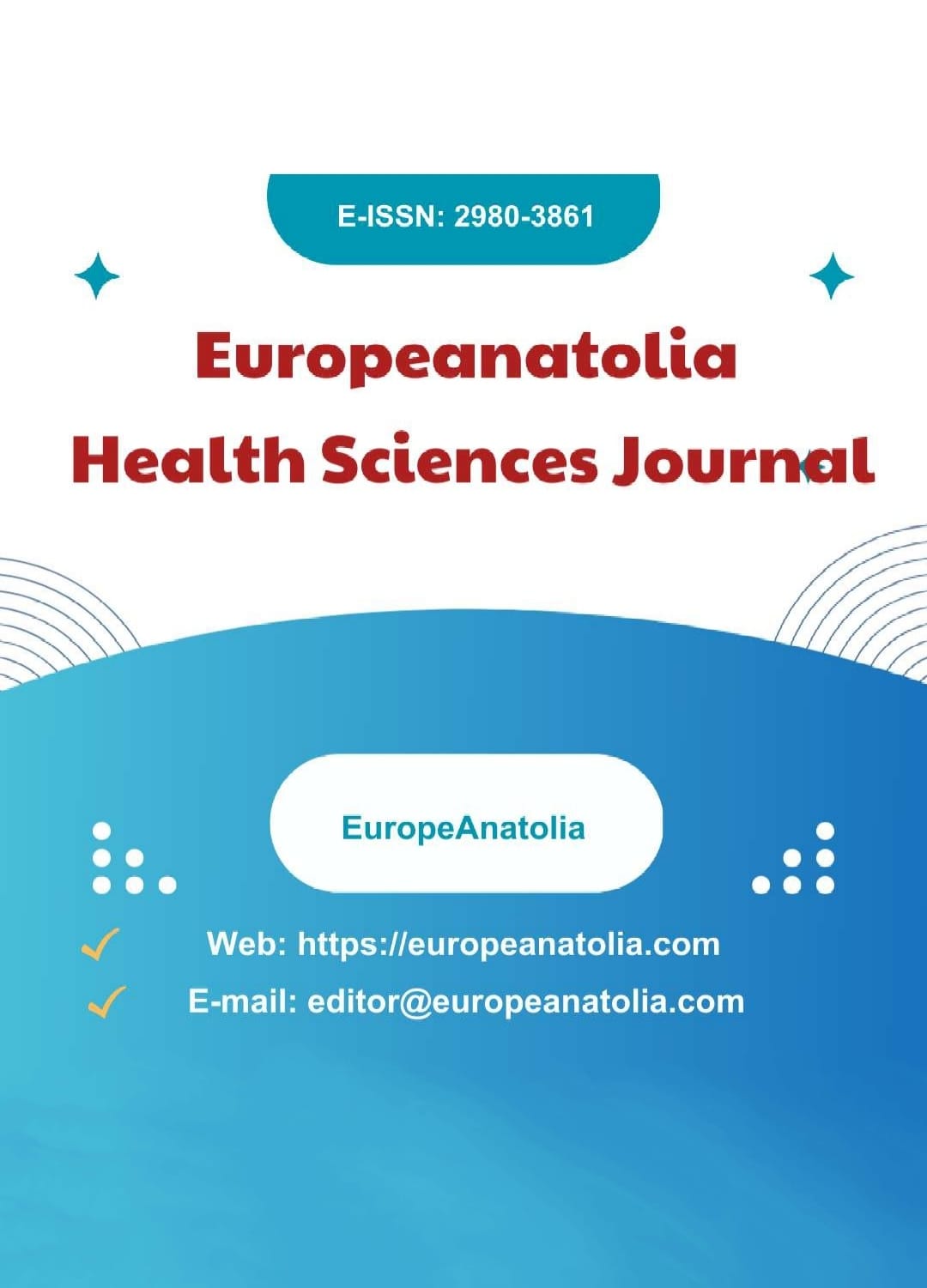Analysis Of Cases Operated With Open Spinal Dysraphism Diagnosis And Undergoing Additional Operation Due To Tensioned Spinal Cord Syndrome Developing In Their Follow-Ups
Research Article
DOI:
https://doi.org/10.5281/zenodo.15204294Keywords:
Spinal Dysraphism, Tethered Cord Syndrome, Neural Tube Defect, Pediatric NeurosurgeryAbstract
Objective: The study was designed to elaborate on additional surgical needs, compare the morbidity and mortality of patients diagnosed with open spinal dysraphism, and statistically analyze the results obtained, thus concretizing both our and the families' expectations and predictions.
Method: This retrospective analysis examined open spinal dysraphism patients who underwent additional surgical intervention due to tethered cord syndrome that developed during their follow-up, as well as all the cases that were operated on due to closed spinal dysraphism during the same years. In total, 96 cases diagnosed with open spinal dysraphism and 42 cases diagnosed with closed spinal dysraphism were included in the study.
Results: Paraparesis was detected at 21.9% in the open group and 2.4% in the closed group. Paraplegia was found at 45.8% in the open group but not in the closed group. Monoparesis was seen at 4.2% in the open group and 19.0% in the closed group. In addition, when the open spinal dysraphism cases were examined within themselves, those who underwent additional TCS surgery had a higher rate of normal neurological examination (29.1%). In comparison, paraplegia was detected at a higher rate in those who did not undergo additional TCS surgery (68.3%). In addition, it was observed that hydrocephalus, shunt requirement, Chiari Malformation, scoliosis/kyphosis presence, urological problems, gastrointestinal problems, and mortality rates were higher in open spinal dysraphism cases (p<0.001).
Conclusion: These findings highlight the need for careful follow-up evaluation of patients with open spinal dysraphism and establishing precise long-term follow-up strategies post-surgery.
References
Sinha A, P P, Chakraborty H, Barnwal RK, Sinha R. Burden of neural tube defects in India: a systematic review and meta-analysis. Childs Nerv Syst. 2024;40(12):4123-4135. doi:10.1007/s00381-024-06627-x
Aydin S, Jenkins A, Detchou D, Barrie U. Folate fortification for spina bifida: preventing neural tube defects. Neurosurg Rev. 2024;47(1):724. Published 2024 Oct 4. doi:10.1007/s10143-024-02959-z
Gebremariam BM, Hailu D, Stoecker BJ, Mulugeta A. Birth prevalence and determinants of neural tube defects among newborns in Ethiopia: A systematic review and meta-analysis. PLoS One. 2025;20(1):e0315122. Published 2025 Jan 2. doi:10.1371/journal.pone.0315122
Karuparti S, Dunbar A, Varagur K, et al. Predictors and timing of hydrocephalus treatment in patients undergoing prenatal versus postnatal surgery for myelomeningocele. J Neurosurg Pediatr. 2024;33(6):544-553. Published 2024 Mar 8. doi:10.3171/2023.10.PEDS23327
Fareed A, Farhat S, Kerhani AA, Choudhary A, Raza SSM. Fetal in-utero management of myelomeningocele: a mini-review on history, challenges, management gap, and recommendations. Ann Med Surg (Lond). 2024;86(6):3196-3198. Published 2024 Apr 19. doi:10.1097/MS9.0000000000002061
Tomatir AG, Kiray Vural B, Acikbas I, Akdag B. Registries of cases with neural tube defects in Denizli, Turkey, 2004 2010. Genet Mol Res. 2014;13(4):8537 43.
Erkoç YS, Erdem Y, Bayar MA. Retrospective Evaluation of Surgically Treated Patients with Myelomeningocele. Journal of Ankara University Faculty of Medicine. 2020; Vol. 73, Issue 1
McCarthy DJ, Sheinberg DL, Luther E, McCrea HJ. Myelomeningocele-associated hydrocephalus: nationwide analysis and systematic review. Neurosurg Focus. 2019;47(4):E5. doi:10.3171/2019.7.FOCUS19469
Sert, O. Retrospective evaluation of cases that underwent meningocele and meningomyelocele surgery. Medical Specialization Thesis. Necmettin Erbakan University Institutional Academic Archives. Meram Faculty of Medicine, Department of Surgical Medical Sciences, Department of Neurosurgery, Konya.2021.
Baskurt O, Hicdonmez T, Gazioglu MN. Aberrant Dorsal Nerve Root as a Concomitant Cause of Spinal Cord Tethering Associated with a Dorsal Type Lipomyelomeningocele in a Child With Caudal Agenesis. Niger J Clin Pract. 2024;27(4):537-540. doi:10.4103/njcp.njcp_838_23
Bülbül A,Can E, Uslu S, Kıray Baş E, Şahin Y, Yılmaz A, Nuhoğlu A. Effect of operation time on prognosis and defined additional anomalies among neonatal meningomyelocele cases. The Medical Bulletin of Sisli Etfal Hospital. 2009.
Demir Ö. Retrospective evaluation of neonatal patients treated with the diagnosis of lumbosacral meningocele or meningomyelocele, Van Med J. 2019: 34-38; 26–1, doi.org/10.5505/vtd.2019.82335
Edström E, Wesslén C, Fletcher-Sandersjöö A, Elmi-Terander A, Sandvik U. Filum terminale transection in pediatric tethered cord syndrome: a single center, population-based, cohort study of 95 cases. Acta Neurochir (Wien). 2022;164(6):1473-1480. doi:10.1007/s00701-022-05218-6
Tortori-Donati P, Rossi A, Cama A. Spinal dysraphism: a review of neuroradiological features with embryological correlations and proposal for a new classification. Neuroradiology. 2000;42(7):471-491. doi:10.1007/s002340000325
Findlay MC, Tenhoeve S, Terry SA, et al. Disparities in indications and outcomes reporting for pediatric tethered cord surgery: The need for a standardized outcome assessment tool. Childs Nerv Syst. 2024;40(4):1111-1120. doi:10.1007/s00381-023-06246-y
Hsieh P, Apaydin E, Briggs RG, et al. Diagnosis and Treatment of Tethered Spinal Cord: A Systematic Review. Pediatrics. 2024;154(5):e2024068270. doi:10.1542/peds.2024-068270
Karsonovich T, Alruwaili AA, Das JM. Myelomeningocele. In: StatPearls. Treasure Island (FL): StatPearls Publishing; November 21, 2024.
Xu LW, Vaca SD, He JQ, Nalwanga J, Muhumuza C, Kiryabwire J. Neural tube defects in Uganda: follow up outcomes from a national referral hospital. Neurosurg Focus. 2018;45(4):E9.
Phillips BC, Gelsomino M, Pownall AL, et al. Predictors of the need for cerebrospinal fluid diversion in patients with myelomeningocele. J Neurosurg Pediatr. 2014;14(2):167-172. doi:10.3171/2014.4.PEDS13470
Görgülü A, Çobanoğlu S, Hundemir C, Yanık B. Tethered Spinal Cord Syndrome Dusunen Adam The Journal of Psychiatry and Neurological Sciences. 2000;13:49 55.
Baykal D, Özmarasalı AI, Taşkapılıoğlu Ö. Our Clinical Experience in Surgical Treatment of Lumbosacral Lipomas. Uludağ University Faculty of Medicine Journal. 2022;48 (1) 49-52.
Downloads
Published
How to Cite
Issue
Section
License
Copyright (c) 2025 Europeanatolia Health Sciences Journal

This work is licensed under a Creative Commons Attribution 4.0 International License.










